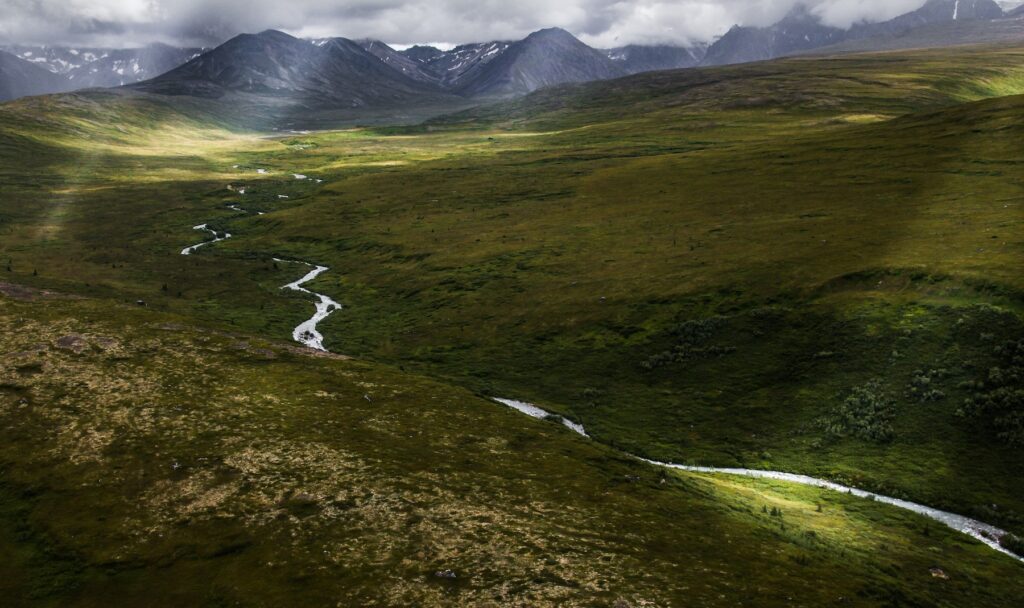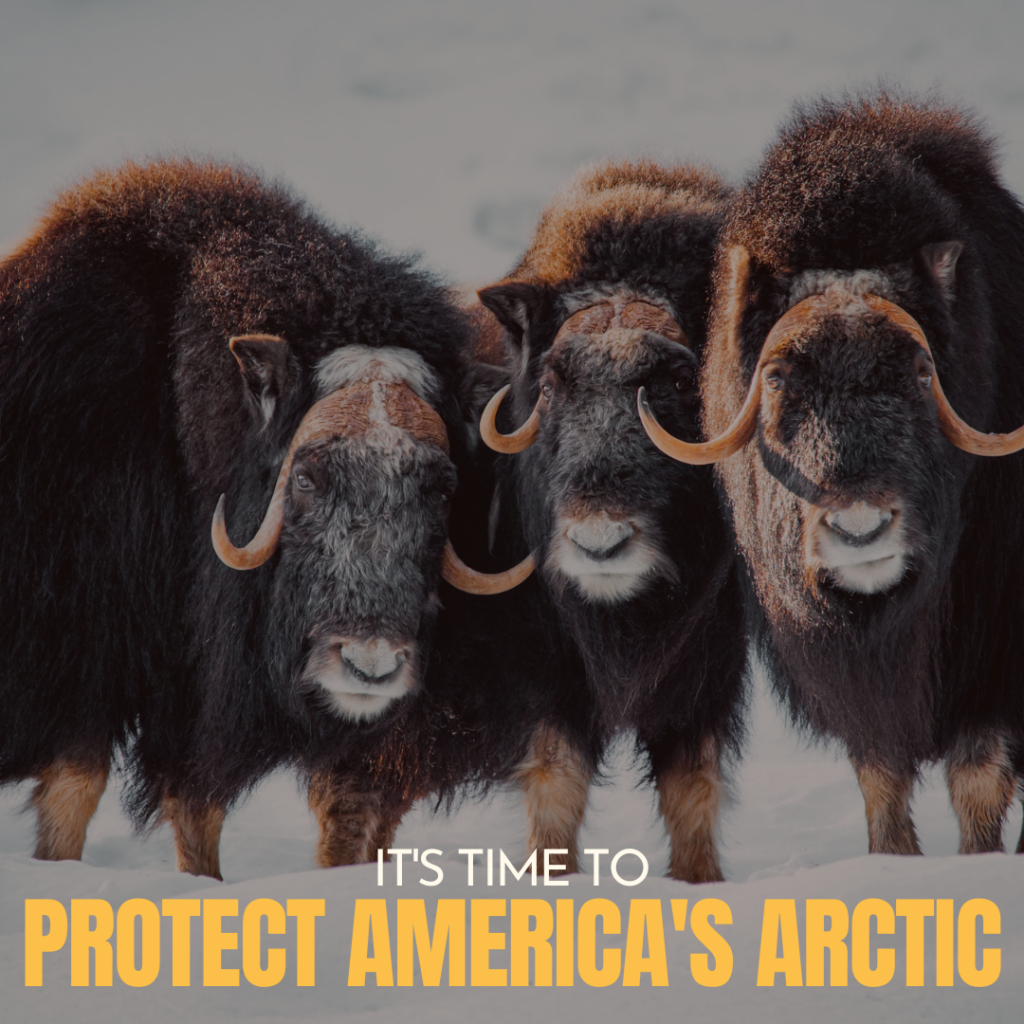Protections for America’s Arctic: What You Need to Know

Did you catch the good news? Last week, the Biden administration announced a suite of actions to protect diverse landscapes across America’s Arctic, recognizing the importance of Alaska’s public lands and waters for communities, biodiversity and our global climate.
Oil and gas development across the Arctic is a major threat, and these announcements get us another step closer to meaningful, lasting protections for the region. The climate crisis has never been more profoundly felt globally (hello hottest summer ever recorded) and this announcement couldn’t have come at a more critical time.
Actions last week are meaningful for two expansive landscapes on Alaska’s North Slope: The Arctic National Wildlife Refuge (Arctic Refuge) and the National Petroleum Reserve-Alaska (Reserve). Together, these regions comprise a vast network capable of immense climate resiliency for communities and biodiversity alike. The moment couldn’t be more ripe for action.

What’s Included in the Protections?
1) All existing oil and gas leases on the Arctic Refuge Coastal Plain have been canceled
For nearly three years, there were seven outstanding oil and gas leases on the Coastal Plain of the Arctic National Wildlife Refuge, all held by the Alaska Industrial Development and Export Authority (AIDEA). Despite overwhelming public testimony against drilling the Arctic Refuge and every other bidder walking away from their leases (because they knew what a poor investment it was), AIDEA stubbornly held onto their bad decision.
As part of last week’s actions, the Department of the Interior canceled all seven remaining oil and gas leases on the Coastal Plain of the Arctic National Wildlife Refuge, all still held by AIDEA.
How exactly were they able to do this? In their announcement, the administration cited that they had the authority to cancel these specific oil and gas leases as they’d been issued illegally under Trump’s former leasing program. Basically, the leasing program was illegal from the get-go, making any leases issued under it null.
And why were they considered illegal? Trump’s 2017 Tax Act mandated that two oil and gas lease sales had to occur on the Coastal Plain which had been off limits to development for decades. Trump rushed the environmental review for an Arctic Refuge leasing program to appease the Alaska delegation and corporate interests, resulting in an extremely flawed environmental analysis finalized in 2020. While the 2017 Tax Act did mandate a lease sale, it didn’t exempt those sales from bedrock conservation laws like the National Environmental Policy Act (NEPA) or the Alaska National Interest Lands Conservation Act (ANILCA). Each requires a thorough consideration of drilling impacts on the environment and local subsistence.
Which is to say, Trump’s leasing program didn’t follow any of the critical laws meant to safeguard the lands and waters throughout our country, and the rights of subsistence users in America’s Arctic. Given the grave concerns about the legality of the Trump leasing program, the Biden administration exercised its authority to rescind improperly issued leases.
While this action is incredibly powerful for Arctic protections, it’s worth remembering that at this stage, this announcement only undoes poor policy planning under the Trump administration. So when it comes to protecting America’s Arctic, we’re only back to where we were three years ago. Now it’s time to accelerate protections to get us beyond the baseline.
2) A public process was initiated to address the illegal Trump-era leasing program in the Refuge
In addition to the cancelation of the leases, the administration also released a draft Supplemental Environmental Impact Statement (SEIS) for the Arctic Refuge leasing program. That’s a complex way of saying the administration also took action last week in the review of the Trump-era leasing program as a whole, to update it so that any future lease sales are held consistent with laws that provide protections for our nation’s land, air and waters.
While another lease sale might sound like a bad thing — and it is far from ideal from our perspective — the unfortunate reality is that the 2017 Tax Act mandates a second sale by December 2024. At this stage, it’s nearly impossible to roll that lease sale mandate back.
That said, we are optimistic companies will take a pass this time around. With all major banks, several insurance companies, most fossil fuel industries and a host of other corporations already refusing to step their proverbial foot onto the Arctic Refuge (because it’s simply a terrible investment decision), the lease sale is unlikely to result in serious bidders. That said, it’s critical that this second sale provides strong protections if any bidders do show up. We are grateful that the administration is acknowledging the importance of our nation’s bedrock environmental laws as it prepares an SEIS for the mandated lease sale next year.
3) Protections for at least 10 million acres of Special Areas in the Reserve
The third and final component of this week’s announcement was a proposed regulation that would add additional protections for lands in the Reserve. This landscape — the largest single unit of public lands in the nation — includes 13 million acres that have been designated as “Special Areas,” identified as having significant biodiversity, cultural, historical or other unique values that require “maximum protection.”
While these past protections sound great on paper, the term “maximum protection” has not been clearly defined, and different administrations have even gone so far as to offer up oil and gas leases in designated Special Areas. To add size, durability and strength to Special Area protections, the Biden administration proposed a process to expand Special Areas and to ensure that “maximum protection” shall remain in place as long as the unique characteristics of a Special Area remain present. This includes clarifying what the term “maximum protection” actually means. For more than 10 million acres, the term would mean an outright prohibition of selling any future oil and gas leases. The proposed rule also strengthens environmental and subsistence protections and encourages the BLM to pursue co-stewardship of lands, waters and wildlife with Tribes.

Where Do We Go From Here?
Combined, these announcements are the start of a new direction in America’s Arctic. The foundation has been laid, and now we can begin to build.
In the years ahead, we will continue seeking legislative protections against oil and gas drilling in the Arctic Refuge, and a full restoration of protections that existed until 2017. In the Reserve, the Willow project — which we are still litigating — is a looming threat, and a slew of other projects could still occur on 2 million acres of already leased lands in the Reserve, without further action.
All that said, we celebrate these actions and recognize the meaningful progress in America’s Arctic. These announcements show us a future where our public lands — even areas that were historically viewed for their petroleum potential — will now be prioritized for conservation and climate solutions.
We thank President Biden and Secretary Haaland for all they are doing to honor Indigenous communities and our nation’s climate, biodiversity and conservation future. We remain committed to securing these victories — and more — in partnership with you during the months to come.
